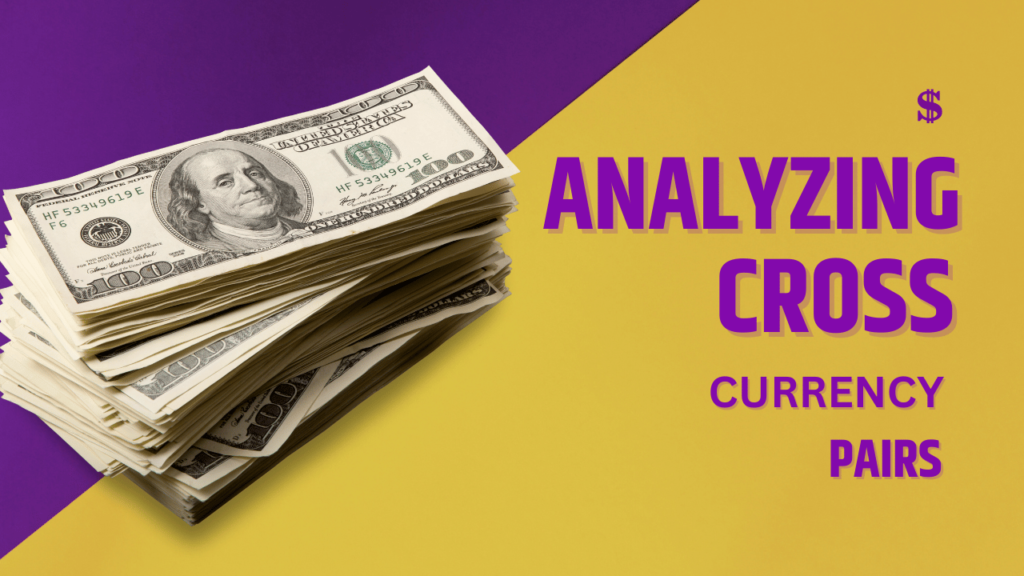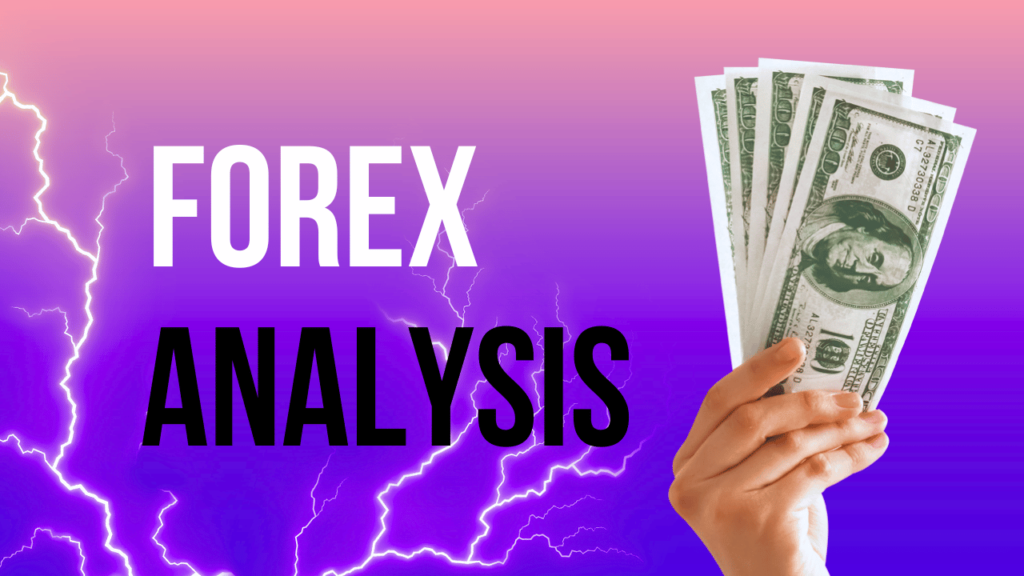
Table of Contents
Introduction
Currency pairs are continuously being purchased and sold in the exciting world of forex trading. US Dollar (USD)-based currency pairings, such as EUR/USD or GBP/USD, are the most frequently traded ones. Cross currency pairs, often known as “cross rates,” are one of the many additional currency pairs that may be traded. Cross rates are currency pairings in which the US Dollar is not one of the participating currencies. We will examine forex cross rates in this post, including what they are, how they operate, and why traders should care.(forex heatmap)
In the vast and ever-evolving world of foreign exchange (forex) trading, understanding cross rates is crucial for investors seeking to navigate the complex web of global currency relationships. While forex pairs involving major currencies such as the US dollar, euro, and Japanese yen dominate the trading arena, cross rates offer a unique perspective by introducing currencies that are not directly tied to the US dollar. In this article, we will delve into the intricacies of forex cross rates, exploring their significance, calculation methods, and the valuable insights they can provide to astute traders.
Understanding Cross Currency Pairs
The US Dollar is the key currency in well-known currency pairings including EUR/USD and GBP/USD. These currency pairs show the exchange rate between the US dollar and the euro or the US dollar and the pound. On the other hand, cross-currency pairings directly link two important currencies without including the US Dollar. Cross-currency combinations include GBP/JPY, EUR/JPY, and EUR/GBP
The exchange rate between the Euro and the British Pound, for instance, is shown as EUR/GBP. Without taking the impact of the US Dollar into account, a trader betting on EUR/GBP is effectively betting on the strength or weakness of the Euro relative to the British Pound. For instance, EUR/GBP displays the exchange rate between the Euro and the British Pound. A trader betting on EUR/GBP is essentially betting on the strength or weakness of the Euro compared to the British Pound without considering the effect of the US Dollar.
Calculating Cross Rates
Calculating cross rates can be done using two methods: direct and indirect. The choice of method depends on the availability of exchange rates and the currencies involved.
Direct approach: In the direct approach, the cross rates are calculated using the rates of the two currencies relative to a third currency that they have in common. To obtain the EUR/GBP conversion rate, for instance, you would use the EUR/USD and GBP/USD exchange rates.
EUR/GBP = EUR/USD ÷ GBP/USD
Using this method ensures the cross rate is derived from the two currencies’ respective relationships with a common currency.
Utilizing the various exchange rates between the two currencies and the local currency is the indirect technique. For example, you would take the GBP/USD and JPY/USD exchange rates to determine the GBP/JPY conversion rate. The equation reads as follows:
GBP/JPY = GBP/USD × JPY/USD
This method derives the cross rate by comparing the two currencies’ exchange rates with their common value against the home currency, the US Dollar.
Significance of Cross Rates
Cross-currency pairs play a crucial role in forex trading for several reasons:
Diversification: Cross rates allow traders to diversify their exposure to different currencies without involving the US Dollar. This can be especially important when the US Dollar is experiencing significant volatility.
Arbitrage Opportunities: Cross rates can present arbitrage opportunities for astute traders. If the cross rate deviates from the calculated value based on the exchange rates of the individual currencies against the US Dollar, traders can take advantage of the discrepancy.
Reduced Transaction Costs: Trading cross-currency pairs can sometimes lead to reduced transaction costs since traders avoid converting their home currency into US Dollars and back again.
Risk Management: Cross rates provide an alternative for hedging strategies. If a trader has significant exposure to one currency, they can hedge their risk by using a cross-currency pair that includes the desired currency and another currency that tends to move differently.
Factors Affecting Cross Rates
Several factors influence the movement of cross-currency pairs, including:
Economic Indicators: Economic data, such as GDP growth, employment figures, and inflation rates, can impact the value of currencies, leading to fluctuations in cross rates.
Interest Rates: Central bank policies and interest rate differentials between two countries can affect cross rates significantly. Higher interest rates in one country can attract foreign capital, driving up the value of its currency relative to others.
Political Stability and Geopolitical Events: Political uncertainty or geopolitical tensions in a country can lead to currency fluctuations, affecting cross rates.
Market Sentiment: Investor sentiment and market speculation can drive short-term movements in cross-currency pairs.
Commodity Prices: Countries heavily reliant on commodity exports may see their currencies influenced by changes in commodity prices.

Popular Cross Currency Pairs
Some of the most actively traded cross-currency pairs include:
EUR/GBP: Euro against the British Pound.
GBP/JPY: British Pound against the Japanese Yen.
EUR/JPY: Euro against the Japanese Yen.
AUD/NZD: Australian Dollar against the New Zealand Dollar.
EUR/CHF: Euro against the Swiss Franc.
Forex cross rates are essential tools for traders looking to diversify their currency exposure, seek arbitrage opportunities, or implement risk management strategies. Understanding how to calculate cross rates and being aware of the factors that influence their movements can give traders a competitive edge in the forex market. By considering cross-currency pairs alongside major currency pairs, traders can make more informed decisions and navigate the complexities of the foreign exchange market more effectively. As with all forms of trading, comprehensive research, risk management, and a disciplined approach are key to success when trading forex cross rates. (financial update other blogs)

Analyzing Cross Currency Pairs: Trading Strategies and Risks
Trading Strategies for Cross Currency Pairs
Trading cross-currency pairs requires a different approach compared to trading major currency pairs. Here are some strategies to consider when dealing with cross rates:
Understanding Correlations: Cross-currency pairs can exhibit strong correlations with major currency pairs or other cross rates. Traders must analyze historical correlations to identify potential trading opportunities or diversification benefits. Positive correlations indicate that two currency pairs tend to move in the same direction, while negative correlations imply they move in opposite directions.
Using Technical Analysis: Technical analysis can be an effective tool when trading cross rates. Traders can apply various technical indicators and chart patterns to identify trends, support, and resistance levels, and potential entry and exit points. However, it’s important to remember that cross rates might not always follow technical patterns as precisely as major pairs do.
Considering Fundamentals: Although cross-currency pairs might not receive as much attention in the financial media, their movements are still influenced by economic fundamentals. Keeping an eye on economic indicators, central bank policies, and geopolitical events in the countries of the currencies involved can provide valuable insights for trading decisions.
Risk Management: Trading any currency pair carries inherent risks, and cross-currency pairs are no exception. Traders should use appropriate risk management techniques, such as setting stop-loss orders and position sizing, to protect their capital from adverse price movements.
Seasonality and Time Zone Considerations: Some cross rates might experience seasonal patterns or exhibit specific behaviors during certain times of the day due to overlapping trading sessions. Traders should be aware of these factors to optimize their trading strategies.

Risks of Trading Cross Currency Pairs
While cross rates present various opportunities, they also come with specific risks that traders should be aware of:
Liquidity Concerns: Not all cross-currency pairs have the same level of liquidity as major pairs. Fewer liquid pairs can experience wider bid-ask spreads, making it more challenging to enter and exit positions at desired prices.
Volatility: Cross rates can be more volatile than major pairs, particularly during times of economic or geopolitical uncertainty. Increased volatility can lead to rapid price movements and higher trading risks.
Market Access: Some brokers might offer limited access to cross-currency pairs, especially those with lower trading volumes. Traders should ensure that their chosen broker provides access to the specific cross rates they wish to trade.
Higher Costs: Trading cross rates might involve additional costs, such as conversion fees or margin requirements, due to the lack of direct liquidity in some pairs.
Less Research Coverage: Cross-currency pairs might not receive as much research coverage as major pairs, making it more challenging to find reliable market analysis and forecasts.
Conclusion
Forex cross rates add depth and diversity to the foreign exchange market, offering traders a broader range of trading opportunities. Understanding how cross-currency pairs work, calculating cross rates, and analyzing the factors influencing their movements are essential for successful trading. Traders should develop appropriate strategies based on technical analysis, fundamental analysis, and an understanding of correlations to navigate the complexities of cross rates effectively.
As with any form of trading, risk management remains crucial when dealing with cross-currency pairs. Traders should be mindful of the specific risks associated with cross rates, such as liquidity concerns and increased volatility, and employ sound risk management techniques to protect their capital.
By incorporating cross-currency pairs into their trading portfolios, traders can enhance their forex trading strategies, capitalize on new opportunities, and achieve a more well-rounded approach to navigating the dynamic and ever-changing foreign exchange
